|
Reading leads to better writing for many reasons, and National Book Month is the perfect time to highlight some of them! We would argue that books are both the means and the end for writers.
When we read, we engage in a shared culture with our readers. Whether we are reading what is popular on the market, discussed among our peers, or sitting at the top of our genre, we are forming connections that will enrich our writing imagination and our bond with our target audience. In other words, when we read, we grow. But is all reading equally beneficial? You may have heard Stephen King famously say that often “the bad books have more to teach than the good ones,” so you probably already understand that it’s not a waste of time to give a mediocre book a chance, or allow yourself to enjoy a book that isn’t going to win any awards. But there is a way to make the most of your time spent reading. Read like a writer. When you read with intention, keeping your eyes open for opportunities to apply what you are learning to your own writing, you may find that the novel on your night stand is as good a writing teacher as they come. This doesn’t mean that you can no longer read for pleasure, but do consider trying some of the following ideas:
Take advantage of your resources. Reading is market research, it’s professional development, and it is good intellectual exercise. If that’s not enough motivation to pick up the next book on your TBR pile, consider the fact that there is scientific proof that people who read live longer than those who don't! So read widely and often. It makes for better writing! by Anjanette Barr What is your creative process/What does your creative process look like? Ideas don’t come to me easily. I end up ruminating on a character and then trying to find a plot to fit that character and then once that happens, my process involves a lot of eating chocolate covered almonds and drinking espresso. And then once I find the story in my head, it becomes a bit obsessive and won’t let go of me until it’s done. As many of my stories involve bad people doing bad things, it doesn’t always make me a pleasure to be around. What do you think draws readers to your work? I think I tend to write about good people doing bad things. Or bad people trying to be good people. Within that, there’s a lot of wish fulfillment, which is to say that I often write characters who say the things we wish we could have said in any given moment, but due to social mores and/or the desire not to be punched in the mouth, don’t. That’s fun to read. I hope. Outside of writing, what do you like to do? I love to travel, to read, to watch movies and TV, follow almost all sports and get deeply offended when my team loses, and I genuinely like to sit outside with my wife watching the sun set. How did you initially get into writing? It’s the family business. My mother was a journalist, my father was a TV news journalist, my brother is a novelist and TV producer, my sisters write books on art together, my uncle writes true crime, my cousin writes about classic cars… it’s endless! So it was always something I’ve done. Professionally, it’s also always been what I wanted to do. What is a cause you care about? Women’s rights. Book banning. Equal access to education. Voting rights. Equal protection under the law. You know. All the things the Supreme Court is trying to strip from citizens on a yearly basis these days. Could you tell us about authors who have inspired you? The list is long. Perhaps too long for this simple interview. So let me just tell you about one thing. I got to spend a day with one of my heroes, Donald Westlake. Westlake essentially created the genre of crime fiction that has defined my career and so talking to him was like sitting at the hand of God and finding out the secret sauce, to mix metaphors. He was so kind, so open and vulnerable, so filled with practical wisdom, and he gave me the best piece of writing advice I’ve ever received. More than that, though, was that he was just a mensch. There’s nothing worse than meeting your heroes only to find that their capes are made of asshole. What advice do you have for aspiring authors? Read as much as possible and as widely. Don’t be an asshole. Get a really good chair. Don’t scrimp on the chair. Over-pay on the chair if need be. What does your working space look like? What do you need in order to be productive?
All right, let’s talk about what you can see here. There’s always a stack of books or magazines on my desk, things I’m reading or things I mean to read or things I’m in. So over there today we’ve got Matthew Zapruder’s excellent collection of poems Father’s Day, which I’ve been re-reading for inspiration for something I’m writing; Lou Berney’s new novel Dark Ride, which I’m reading out of pure unadulterated jealousy; a copy of Publishers Weekly that has a starred review of Gangsters Don’t Die in it, which I mean to file away, but, you know, STARRED; and the latest issue of Palm Springs Life magazine, which I’m required to have in my home as a resident. There’s two coffee mugs from the LA Times Festival of Books – one holding pens, one holding the memory of coffee. There’s an old box from Italy meant to hold stamps but it holds USB drives – it belonged to my grandfather, so it’s nice to see it everyday. There’s some snow globes of favorite places – the Bay Area, the Hotel Del – and then there’s a tiny leather box embossed with another grandfather’s initials. I keep more USB drives in there. I have a lot of USB drives. There’s a nameplate for myself, in case I begin to disassociate. There’s a copy of my latest book, so I can hold it up in Zoom interviews. There’s my Macbook Pro, my podcasting mic, various bits of detritus. And then over to the left, on an antique table of my nana’s, there’s an old typewriter, some classic photos of Palm Springs, some Jason Isbell paraphernalia, and forty pound book of Shakespeare’s collected work. I require all of this to write books. Talk to us about music. What are your favorite songs for writing? How do you switch it up? Do you have a theme song for yourself as a writing professional? I always listen to music when I’m writing. At some point it becomes white noise, which helps me concentrate. But I also use music to prime me for emotional scenes, to get me in a ruminative mood, to get me ready to have big shoot outs, that sort of thing. So I listen to a lot of different music depending upon what I’m using the music for in my head. I tend to make big playlists for my books and play the songs over and over again, or until my wife Wendy goes absolutely batshit and tells me to pick new music. I tend to listen to a lot of Jason Isbell & the 400 Unit, The Replacements, The Hold Steady, the Drive-by Truckers, Lori McKenna, Bruce Springsteen, the Jesus and Mary Chain, Mary Gauthier, Ceschi, Beastie Boys, Lucinda Williams, Tom Petty, Kyuss, and then a ton of old 80s music, gangsta rap, and Neil Diamond, obviously. My theme song? Sure Shot by the Beastie Boys. You can’t, you won’t, you don’t stop… What has it been like working with Dunham Literary? It has been a very productive 25 years! Jennie and I started working together when we were both kids – I was 28, I think Jennie was maybe a year older? – and were both so filled with hope and promise. We’ve had such incredible heights – the New York Times bestseller list! Great reviews for a decade at a time! – alongside tough lows – the book I shouldn’t have written because we both knew it wouldn’t sell, and then, lo and behold, it didn’t! – and then spots in between – losing awards but going out for ice cream sundaes afterward and laughing into the morning – and then all the real life shit that is part of a true partnership. I couldn’t ask for anything more. What are your favorite moments of suspense, happiness, or other in your upcoming book? Oh, there’s a scene in my new book that, when I wrote it, I said to my wife: I think I just wrote one of the most fucked up scenes in the history of American literature. She read it and agreed. I won’t spoil it for you. But the biggest thing, for me, was satisfying for the readers the long wait to complete the trilogy. Everything gets answered. But not everyone gets the ending you might want. What are your favorite jokes and quotes in your upcoming book? I think it all comes down to the very last word in the book: “…mitzvah.” That was the title of the short story that started this 15 year journey with the Rabbi David Cohen and it’s a fitting end. How do you celebrate a book release? Mild panic attacks, a great dinner with my wife, and then I just refresh my Amazon number until I fall asleep in a pool of my own saliva. What have you put in your story that you also look for when writers apply to your MFA program? A thing I learned from the wonderful writer Megan Mayhew Bergman: I try to put something strange or something beautiful on every page. A thing I learned from Elmore Leonard: That even the worst humans deserve some level of empathy. That thing I learned from Donald Westlake: That a story is over when the reader could write the next page. Are your dogs with you while you write or are they too distracting? Always! There’s one sitting beside me right now, licking her foot. Gracie Goldberg, stop! Drive provokes curiosity in readers. “And then what happened?” is the question readers ask to find out what comes next in a story. A story with a lot of drive keeps readers turning pages. Curiosity is such a strong force that people cannot resist. It killed the cat, right? But, despite the sayings, it doesn’t always lead to a bad place. Readers enjoy diving into a book head first to satisfy their curiosity. The more readers want to find out, the more glued to pages they are to find out what happens next. Drive is usually connected to action and events rather than thoughts and feelings. When readers talk about stories, they say “then what happened?” not “then how did she feel?” This doesn’t mean that readers don’t want to know how she felt, it means that first readers need to know what happens and when they do, they expect to find out what she thought and felt as part of the details of what happened. Remember above when I said curiosity doesn’t always lead to a bad place? Well, inside the book, it usually doesn’t lead to good places. Which is precisely why it’s interesting for readers. Characters need to face considerable adversity almost to the point that readers are glad not to experience it first hand. Commercial style books have a lot of drive by definition, hence the term “plot-driven.” A story’s drive relates to the events and actions in the story. Frequently, what happens next isn’t the typical action that readers expect because the joy of finding out what happens next is to be surprised at the unexpected. When a firefighter bursts through the door, readers want to know what happens next. Does the firefighter start putting out the fire? Or, does the firefighter look for trapped people? Or, “Surprise!” is that just Dad dressed in a fireman’s outfit to celebrate a child’s birthday? Surprise indeed. Literary books, which are character-driven, also have drive, but they usually have different types of questions that readers want to find out chiefly related to character exploration. In other words, the reader wants to know not just what happened next but why the character did something seemingly incomprehensible. If a book doesn’t have enough drive, readers stop reading. Loss of engagement means no longer feeling connected to the characters and the story to find out more. In other words, losing curiosity. Because of that, it’s the author’s job to keep the drive going in a story so that readers will want to find out what happens next. If the characters and predicaments aren’t interesting enough, readers won’t care about finding out what happens next. One way to heighten drive is to make sure that the end of each chapter contains a question that makes readers want to turn the page immediately and continue with the next chapter. While chapter endings usually stop at the end of a scene or something wraps up, they must also contain the seed for the next step in the story so that readers have an urge to keep going. And stating a question is a good way to get readers thinking about possible answers. The climax should hold the answer to one of the central questions that has been driving the story. Finally, as the protagonist experiences the biggest challenge of the story, readers find out answers to key questions that have contributed to the mounting tension. The resolution, then, ties up loose ends by explaining unanswered questions related to various characters and subplots. The sense of an ending in part comes from the drive winding down as questions are answered. Drive is the force that compels readers to turn pages. With plenty of drive, readers will wish the book wouldn’t end. by Jennie Dunham One of the most wonderful elements of the author journey is becoming a part of the #writingcommunity. We hear time and again what a difference it makes to have support and feel engaged rather than isolated. Not only will being in community keep you apprised of the changes and challenges in and of the publishing industry, it will give you opportunities to find fulfillment in helping fellow writers. Today we have some ideas to get you started. 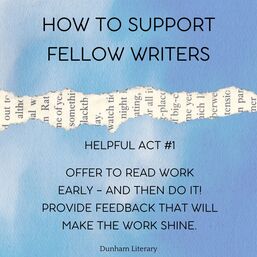 A great place to begin is by actively and unselfishly offering to be a reader of pre-published works. It can be harder than writers sometimes expect to get people to follow through with reading drafts of manuscripts. Be the friend that can be utilized as an alpha or beta reader that will commit to reading intentionally and providing feedback! And don’t stop at “This book was great!” You know how important empathetic and actionable advice is, and how much you’d like to receive it, so give generously! 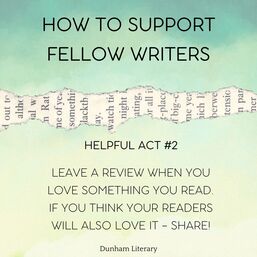 When you’ve finished a published book that you love, leave a review anywhere readers can find it! Word of mouth remains the very best marketing tool of them all. It's organic and meaningful, and it's the perfect way to support the #writingcommunity. Reading should be part of every writer's priorities, and reviewing or sharing what you've read is a small additional step with a big pay off for the person who write the book. If you love it; share it. Your friends and your audience will thank you for your sincere recommendation! 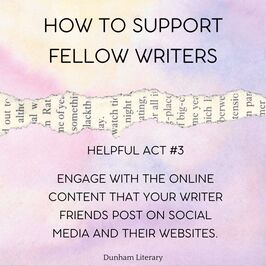 Engage with the online content that your writer friends post on social media and their websites. When you "like," "follow," and "share" your author friends' content, it makes it more discoverable, AND it boosts their confidence that their efforts are worthwhile. Even if you don't have time to comment, members of your #writingcommunity benefit greatly from those quick clicks, and will likely someday return the favor. If you do have time, pay it forward by leaving your kind thoughts for others to see. You might tip the scales to help someone else choose your friend’s book as their next read. 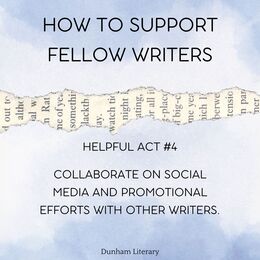 Collaborate on social media and promotional efforts with other writers. This is something you can begin long before you are published. One of the easiest ways to gain new followers on social media is to get in front of the audience of a writer friend who is engaging with your target audience. The two of you (or group of you) will naturally have some overlap in your readership, but there will be new people to interact with in your shared circles as well. A successful collaboration might look like a giveaway or contest, or it might be something like a book club, read-along, or special in-person event. Don’t be afraid to put your heads together and have some fun. 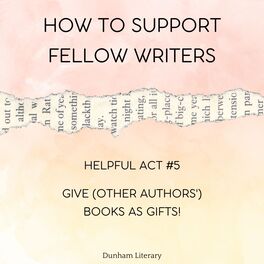 Give books as gifts! As you read books, make a goal of thinking about the people in your social sphere who would enjoy them. Then pass them on! Or if you can’t part with it or read the ebook/audio, purchase the book for your friend or family member for the next holiday. I know that I am personally much more likely to read a book quickly if it was given to me by someone who read it and knows it’s “my kind of book.” Special editions and signed copies of books also make excellent gifts. And how wonderful is it that you’re actually helping two people – your gift recipient and the author! 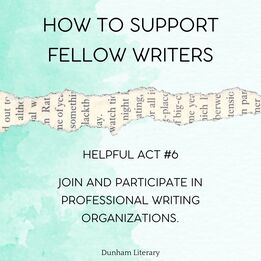 Join Professional Writing Organizations. Becoming a member of an organization like SCBWI, the Author’s Guild, Mystery Writers of America, or a local writing guild is an excellent way to get to know other writers. It’s also inherently supportive to the writing community as a whole. Your membership dues and your participation allow those organizations to offer robust programming and resources that will benefit everyone involved. As you get to know others in the writing community, you will have more and more opportunity to be on the receiving end of this kind of support. Forming strong bonds with writing friends is the best way to ensure you’ll be on their mind when they are looking for someone to partner with, and that bond often begins with a selfless gesture. We hope this post has inspired to take the first step!
By Anjanette Barr What inspired you to create the Cat’s Cradle Series?
Ironically, it was inspired by a dog! You know those types of gentle giants that think they're tiny little lap dogs? My partner's family had the biggest, sweetest pit bull just like that. He had a habit of flopping down on top of me when I sat on the floor, and then refusing to get up. So one day as I'm lying there pinned to the floor, I plead with him that if he'll just get off of me, I'll take him to the land of giants where he can finally be a lap dog. The thought stuck with me, and over time it grew into this whole story about monsters, friendship and finding your true home. What is your creative process? What does your creative process look like? Do you ever switch it up? Do you have any tips for breaking writer’s (or illustrator’s) block? My stories start like a sprouting seed— one scene that excites me and grabs my attention. Everything grows from there, and my role is like a gardener's in a topiary— nurturing new shoots and pruning others, until I'm satisfied with the shape. The drawing will usually grow alongside the story, as I need to know what my characters look like. If I'm ever stuck drawing, I just sketch loosely until I find something interesting. Writer's block is harder to tackle for me, as I came to writing later than drawing, but I have developed a few techniques that help. If I'm stuck in a particular plot point, I'll sometimes try the opposite of what I originally intended: If I wanted my characters to escape, what if they get captured instead? I send all these feelers out and see if any take root. What do you think draws readers to your work? It's tough to get an outside perspective on your own work, but from the comments I get, I'd say that “charming spookiness” is one of the factors. Even when I try to make a monster downright scary, I can't seem to help making it cute somehow. Outside of writing and illustrating, what do you like to do in your personal time? I love treasure hunts! My own type of treasure that is— mushrooms and fossils. Where I live in the Ottawa region, we're lucky to have some pretty cool fossil deposits, and the trails in my village are full of weird mushrooms if you look for them. What is a cause you care about? Education. Education is so much more than preparing kids for the workforce— it's about making them creative, critical thinkers and good human beings. Could you tell us about authors and illustrators who have inspired you? I have a wide range of influences, from Calvin and Hobbes, to Phillip Pullman's His Dark Materials, and Rumiko Takahashi's Ranma ½. Style-wise, I've been hugely influenced by Isabella Mazzanti and Matt Rockefeller. What advice for do you have for aspiring authors and illustrators? Create and share. Start putting your sketches or short stories out there, even if you think they're not quite ready yet. Participate in online writing or drawing challenges to get practice and reach a wider audience. And don't be afraid of trying out techniques and motifs you see in artists you love. When I was younger, I resisted looking at other artists too closely— as if I was "cheating", and that my style had to come purely from my imagination to be my own. But once I gave myself permission to learn from other artists, my style improved in leaps and bounds! Graphic novels are captivating but a lot of work. What do you like best about the graphic format and what are the biggest challenges? Comics are magic— they give the impression of action with just a few key drawings. They're the perfect blend of story and art, where both reinforce the other. The biggest challenge is exactly what you said— they're a lot of work! What does your working space look like? What do you need in order to be productive? Like a Victorian alternate reality, with a mix of thrifted antiques and giant computer screens. I LOVE old objects and paintings— they nurture my soul! And though I'm far from a neat freak, I keep my studio fairly tidy these days, as I find clutter distracting. Talk to us about music. What are your favorite songs for writing? Do you have different favorite songs for illustrating? Why the difference? Do you have a theme song for yourself as a writing professional? For writing I need wordless music, so classical is a first choice, along with some contemporary piano. I don't have just one theme song, but I have music to associate with particular times of the year. My music playlists are divided by seasons, with autumn and winter being more inspiring usually! What has it been like working with Dunham Literary? Amazing! I first met Jennie at a conference and connected instantly! I love her straightforward approach and her genuine love of books and stories. And it's great to have someone who's very organized to keep an eye on me, since I can be scatterbrained when left to my own devices. What are your favorite moments of suspense or happiness in your upcoming book? In the second book I introduce a young thief who's hiding a dark secret from Suri, my main character. I love the tension it creates when the audience knows something the others characters don't! What are your favorite quotes and illustrations from the series so far? I love drawing dynamic scenes and moody lighting. Because much of the action in The Mole King's Lair takes place in a cave, I got to play with colors to my heart's content! How do you celebrate a book release? By getting together with some of my writer friends, and rewarding myself with more books! I love getting books— maybe too much. We have bookshelves in every room and we're still running out of space! Welcome to a new feature on the Dunham Literary Blog! Jennie and Anjanette will be sharing our thoughts from the industry insider perspective on books we read. Our first read is CAMP ZERO by Michelle Min Sterling, published by Atria Books. Erin Harris of Folio Literary Management represented the book, not us, but it's important for all of us - authors, agents, and editors - to read widely and to support all those involved in making books. When we talk about books, we foster connections with each other and we understand each other better. 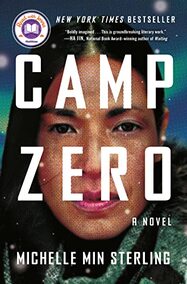 Blurb from the Publisher: “In remote northern Canada, a team led by a visionary American architect is breaking ground on a building project called Camp Zero, intended to be the beginning of a new way of life. A clever and determined young woman code-named Rose is offered a chance to join the Blooms, a group hired to entertain the men in camp—but her real mission is to secretly monitor the mercurial architect in charge. In return, she’ll receive a home for her climate-displaced Korean immigrant mother and herself. Rose quickly secures the trust of her target, only to discover that everyone has a hidden agenda, and nothing is as it seems. Through skillfully braided perspectives, including those of a young professor longing to escape his wealthy family and an all-woman military research unit struggling for survival at a climate station, the fate of Camp Zero’s inhabitants reaches a stunning crescendo. Atmospheric, fiercely original, and utterly gripping, Camp Zero is an electrifying page-turner and a masterful exploration of who and what will survive in a warming world, and how falling in love and building community can be the most daring acts of all.” Why did we pick this book?
Jennie: I knew I wanted to read this book the first time I heard about it because the premise sounded great. It’s set in the not-too-distant future, which makes it feel like it’s on the edge of possible, yet the world described in the cover copy seems markedly different from ours today. I was also intrigued by the characters and how their lives would intersect, how their motivations would bring conflict. I also chose this book in order to stay current with reading books that are popular. It became a bestseller instantly, so it’s striking a chord with many readers. As an agent, reading successful books is part of staying aware of the industry. How did you feel about reading this book after Jennie chose it? Anjanette: The Arctic setting certainly appealed to me as an Alaskan! I was also intrigued that this is set in the near-future, but still sounded dystopian. Those two things were enough to pique my curiosity, and I tend to gravitate toward upmarket and genre fiction. I love a fast-moving plot. Also, how about that gorgeous cover! What do you think about the choice to tell the story from multiple pov? Jennie: It’s ambitious to write a book from multiple perspectives, so as a reader I tend to be hesitant at the start. In this case, part of the drive in the story is to find out how the characters are connected. Also, the multiple perspectives makes the story transcend the individual characters by laying out a bigger, more significant narrative that overarches the individual characters. Did the author accomplish what they set out to with multiple timeline structure? Anjanette: I think that the way time was handled in this story added to the complexity in a positive way. The three povs are never confusing, and as the clues start to point toward their being multiple timelines as well, it increased tension and kept me turning pages. It was skillfully done. Do we think that Dystopian novels will make a come back? Is this Dystopian? Or just near-future cli-fi? Jennie: I’ve heard editors saying that right now they are tired of Dystopian stories with the perhaps too accurate joke that the shelf for Dystopian books should be renamed “Current Events.” That said, I think readers are drawn to explore the future despite how unsettling it can look. It can be tiring to read books without hope. As with any type of story, readers, especially voracious readers, want stories to be fresh and to add something different to the stories that already exist. Which characters are most relatable and why? Anjanette: The chapters are narrated from three different perspectives – Rose, Grant, and White Alice. I found Grant to be the least developed character, and was happy with the role he ended up playing, though I could not relate to him. “White Alice” feels like a single entity even though it/she is comprised of multiple characters, which makes Rose feel like the primary protagonist. This is story is told through a feminist lens, so it makes sense that the women are in the forefront. All that stated, I was surprised to find myself relating to and most invested in a secondary character – The Barber. Perhaps it’s because he stands in for the majority, and for the “past.” He is less of a revolutionary than many of the characters, but is still trying to actively navigate his life and not settle for status quo. I enjoyed learning about the hidden parts of his life as the book progressed. Is CAMP ZERO “plot-driven” or “character-driven?” Or an “issue book?” Jennie: CAMP ZERO is a character-driven story. It’s speculative fiction because it’s set in the future and because all the characters face challenges which exist because of the situation of that future world. It stays true to the genre of speculative fiction by having several big plot twists. But, it’s not a plot-driven novel because the characters aren’t sacrificing themselves to accomplish a bigger, more important goal for society; they are following their individual motivations. While much of the setting and characters’ situations rely on the issue of climate change, the characters in the book are not actively trying to address climate change with political activism, rebellious vandalism, or progressive science. The world ravaged by climate change is not more important than the characters, whereas if this were a plot-driven book, the opposite would be true. Why do you think this became an instant bestseller? Anjanette: CAMP ZERO blends a literary style and character-driven story with a fairly commercial plot. Those who enjoy genre fiction will gravitate toward its speculative elements, and those who prefer book club or literary fiction will find robust themes for discussion. The combination of the publishing weight behind the book (it was sold to multiple markets simultaneously, and backed by strong publishers), the gorgeous cover, and the fact that it was picked up for “Read with Jenna” before publication day set it up for success. And the book has a great hook! Check back soon for our take on more popular books. And remember that reading widely is one of the best investments of time you can make as an author! The Promises An Author Makes: 5 unspoken promises an author fulfills in a story
Have you ever heard someone say the book didn’t fulfill its promise? Coming from a publishing professional, these can be difficult words to hear. But this feedback can be invaluable in understanding how a manuscript needs to improve in order to be marketable. No author writes “I promise to….” on the back of the book. But in every book the author makes an implicit pact with the reader about the story ahead. It’s as if the author and reader are going on a journey together although the author is present only as the words on the page, like a soul that has traversed this trail previously guiding someone for the first time. Without explicitly using the words “I promise,” the reader knows that the author has made promises about what will happen in the story based on the type of book, premise, and opening pages. But, what are those promises? The author’s promise about new places is: I will take you somewhere you have never been. A new place will be enticing to readers. Readers wonder what it’s really like there, and they want more than a tourist view. In order to make it worth the time and effort of reading a story in a particular setting, the author needs to depict a place that the author believes and can construct fully in the imagination. When the author fulfills the promise of going to new places, readers come away feeling as if they were in a specific place, different from anywhere they’ve been before the story. The author’s promise about new experiences is: I will guide you through experiences you’ve never had. Readers enjoy stories because they imagine facing an obstacle or living through a situation that they haven’t or can’t have. Readers want to know the details of the experience at each step as the tension mounts to the climax, not just the end result of what happened. When an author has fulfilled the promise of new experiences, readers come away with a nuanced understanding of the experience despite going through it vicariously. The author’s promise about familiar places is: I will show you a familiar place so you see it with fresh eyes. If a reader picks up a book set in a place they’ve lived or visited, they want to revisit that place. The author’s depiction of that place allows the reader to recognize it and to remember the good and the bad about being there. But, the author’s promise goes beyond that. No matter how much the reader knows about the place, after reading the story, the reader will know even more details about the flora and fauna, architecture, history, and people. If the author has fulfilled the promise of returning to a familiar place, the reader reframes their own understanding of that place to include this new knowledge and vicarious experience of being there. The author’s promise about familiar experiences is: I will help you relive a familiar experience in a new way. When a reader picks up a book that includes an experience they’ve been through already, they’re looking to relive it all over again and to be in each moment along the way. When readers put themselves in familiar situations, they can face them with 20/20 hindsight (and no risk). After riding a roller coaster, the immediate response is to do it again and relive the thrill. But, after having the same experience a few times, the thrill feels ordinary and the search begins for a roller coaster that is faster, goes higher, falls harder, and spends more time upside down. In a story the outcome might be the same like riding a roller coaster again, but the reader might also find out that story’s the outcome is different than it was in real life which might feel like a more intense roller coaster ride. The author facilitates the reader going through the emotional ups and downs of the experience and helps them to contextualize the experience. The author fulfills the promise of revisiting familiar experiences by allowing the reader to remember past experiences and be prepared to think and act in new and different ways when faced with them again. The author’s promise about the people readers will meet on the page is: I will introduce you to new, intriguing characters, and I will help you understand why they act the way they do. Why do people do what they do? What makes us human? Readers choose books to meet unique characters who enrich a connection to people and the world. Some characters do things exactly the way the reader would and some would face the same challenge in completely unexpected ways. If done well, a character’s culture, heritage, upbringing, environment, and identity all make the reader’s experience of identifying with the character unique. The author fulfills the promise of introducing new characters if the reader comes away from the story having internalized a new understanding or perspective usually from the protagonist and perhaps from the narrator or other characters in the story too. For an author to fulfill the promise of a book, the story must provide an immersive journey for readers emotionally and intellectually. The elements must fit together so that the story belongs to the protagonist in a way that would be different with any other character. And, the story must present something unexpected or fresh and different so that readers reflect about what they’ve read, something that makes the characters, the places, the events, and the voice memorable long after the last page. The author’s overall promise is that the story will take a reader somewhere dark or uncomfortable. But, that’s ok because the corollary to this promise is that the author is the guide who will bring the reader out safely at the end. This promise creates the reader’s trust in the author. by Jennie Dunham 1. What inspired you to put your story on paper in LIFE B?
It started with an idea for a personal essay – and when that essay, published on Elle.com, went viral-ish and I heard from scores of readers about their struggles with treatment-resistant depression, I knew that my story might help some other people. Those readers are the ones who inspired me to write my memoir. 2. What is your creative process/What does your creative process look like? The hard truth: Writers write. For many years, I wanted to call myself a writer. . . but I wasn’t putting in the work. My life and my process changed when I committed to a daily writing practice. For me, in the past decade, that’s meant writing morning pages first thing (if you’re not familiar with “morning pages,” see Julia Cameron’s “The Artist’s Way”), then writing for 3-4 hours, depending on deadlines and meetings. I always get those hours in, even if it means I have to set aside time in the afternoon. However, like many of my fellow writers, my best creative work happens in the morning. And with coffee. 3. What do you think draws readers to your work? I’ve done many different kinds of work over the years, including blog posts for myself, blogs for other people and institutions, book reviews, author profiles, book-industry reporting, designed books for National Geographic, an anthology, a broadcast author-interview show, designing launch publications, more. . . and the thing that ties all of that together with my creative work (essays and memoir and more in the future, I hope) is my commitment to authenticity and connection. I truly want to engage with writers, authors, creatives, and anyone else who is interested in my work. I’m not in it just for myself and I hope I say that with intentionality and humility. 4. How do you organize your research? The answer would be I’m working on this! All the time. I know some writers loved Scrivener, for example, to organize projects and manuscripts. I haven’t gotten on that train yet. Something that works really well for me is using specific subject lines for emails and other messages, and specific file names for various stages of a project, whether in drafts or first-pass pages. I try to maintain paper files for financial documents and all I can say about that is I’m glad I have a spouse who is detail oriented. 5. Outside of writing, what do you like to do? (personal life outside of writing) I started life as someone enchanted by stories (thanks, Mom, again and always!) and continue to be the most avid of readers – as well as someone with remarkably broad and deep reading taste. I do not judge forms or genres that people love. We all read what we need to read, and thank goodness for librarians, who help many many people , children and others, discover the books that unlock a lifetime of reading. But I do have a life outside of books! I’m long married to my best friend and (at this point) lifelong love; he and I have two grown daughters and we love to spend time with them. The surprise is that they love to spend time with us! We’re all very happy on trail walks (the three of them hike; I’m a little less intrepid), trying every kind of cuisine, visiting museums, you name it. We have a miniature schnauzer who walks with us at home. I love to swim, anywhere, anytime, the colder the water the better, and have swum in an Adirondack lake in late September, the Baltic in May, and at the Cape Cod National Seashore in October. Speaking of museums, I just returned from Los Angeles and took my first visit to The Getty Museum. Its location, grounds, and gardens were stunning. I’ve made a few dozen trips, now, to The Cloisters in Manhattan. I studied medieval literature in grad school and will maintain my Metropolitan Museum of Art membership forever just so I can sit in those cloister walks whenever I’m able to visit. 6. How did you initially get into writing? Like so many of my friends and colleagues in the literary world, I’ve always considered myself a writer. Are you born a writer? I don’t know. But it wasn’t until I’d had quite a few life experiences that I was able to write consistently. My way in was through book reviews, since I’d done so much reading. 7. What is a cause you care about? I care deeply about removing the stigma around mental illness and in improving mental health awareness, so one organization I support is the National Association for the Mentally Ill (NAMI). I believe strongly in reproductive rights for all and have supported Planned Parenthood and NARAL since college. While we have freedom to write and publish in the United States (as of yet), that’s not true in all parts of the world. PEN America and PEN International support the rights of creatives everywhere and keep watch over changing social and political conditions. 8. Could you tell us about authors who have inspired you? And now this questionnaire becomes a manuscript. . . Joking! I’m joking. But I *am* known as The Book Maven for a reason, and that’s because so many different books and authors inspire my work and creativity. There are two books from 2021 that I am still talking about in 2023 and will probably still be talking about in 2029, so I’ll start with them, because they’re so different. The first is THE LOVE SONGS OF W.E.B. DUBOIS by Honorée Fannone Jeffers, an important poet. Her debut novel tells an alternate history of the United States, by which I mean a different history. The contemporary narrator, Ailey Pearl Garfield, delves into her family’s history to learn how to cope with what DuBois called “double consciousness” for Black Americans. It’s fiction – but it’s based on fact, based on the people whose lives were ignored, suppressed, eliminated, by the Western European patriarchal structure that came to power. It’s long (816 pages) and rich and thoughtful and sweeping and necessary. The second is ALL THE FREQUENT TROUBLES OF OUR DAYS by Rebecca R. R. Donner, the biography of her aunt Mildred Harnack that challenges the strictures of the biography genre and pushes it almost into memoir territory – to magnificent effect. Harnack was the only American woman involved in the German resistance movement during World War II. She was executed in 1943 by direct order from Adolf Hitler. Many surprises await the reader, but what makes the book stunning are the surprises that awaited the author during her research. 9. What advice for do you have for aspiring authors? I just tweeted about this! The Serenity Prayer. I don’t do the 12 Steps, but The Serenity Prayer is for us all. I’m not joking. If we really think about what we can’t change, what we can change, and the difference between them, we can take the next right steps on our journeys. Along with that, if you truly want to be an author? Either get a ghostwriter – or become a writer. And the latter choice will take the time it takes. We can’t change that! What we can change, as aspiring authors, is how much we learn about the process of moving from manuscript to finished book. Education is something no one can take away from you. 10. What does your working space look like? What do you need in order to be productive? People who speak to me via videoconference see a serene (if varied) set of bookshelves filled with galleys, ARCs, finished books, paperbacks, hardcovers. Sometimes they also see a lovely vintage writing desk and a chaise longue (which is where I do a lot of reading). What they don’t see is my “working” (writing) desk, which is not a mess, but does have a great deal of stuff on it, from my favorite Uniball pens to a photo of my family to colored pencils to a giant pinboard covered with things that include one daughter’s nursery-school art, an Electric Lit “Read More Women” postcard, and notes from my favorite book publicists. 11. Talk to us about music. What are your favorite songs for writing? How do you switch it up? Do you have a theme song for yourself as a writing professional? I’m currently writing up a Largehearted Boy playlist for “Life B” so this is a question very much on my mind. I write in silence a great deal of the time because my brain pings around a lot when there’s music playing. When I do listen to music it’s often Baroque/classical, the kind that encourages productivity and stability, to keep me going as I finish the day’s word count. When I do need something more energizing, I listen to a lot of African pop, from Nigeria and Ghana specifically. My spouse is a huge blues/soul/R&B aficionado and we share a longtime love of Fela Kuti’s music, which is what has led me to learn about Amadou, Davido, Femi Kuti, so many more! And the women!!! Fatoumata Diawara from Mali is one of my new favorites. Speaking of world beats, have you listened to ADG7, the Korean shamanic pop group that plays on traditional instruments? Holy shit are they great. Now back to my usual nerd content: I love, love, love Early Music. Medieval and Renaissance. Said spouse, who does NOT love it the way I do, takes me to several Folger Consort performances each year (we are so fortunate to have that group associated with DC’s Folger Shakespeare Library). I’ll talk to anyone about Early Music, plainsong, Monteverdi, any time. 12. What has it been like working with Dunham Literary? Seamless. Jennie Dunham is a true professional and a lovely person whose ability to keep an author calm in any crisis cannot be praised highly enough. I’m looking forward to our next projects! 13. How do you celebrate a book release? Eeeeeek. I had the best party for my first all-me book in 2011 for “An Uncommon History of Common Courtesy,” sponsored by National Geographic Books and catered by a local restaurant owned by a former French Embassy chef, held at One More Page Books in Arlington, Virginia. It was truly special. For the anthology I edited, “The Books That Changed My Life,” I had a launch at Book Court in Brooklyn. . . that was, sadly, the wonderful bookstore’s very last event! This time around my launch will be at Politics & Prose in Washington, DC, in conversation with Alexandra Zapruder, and I’m still trying to decide (at the eleventh hour) what kind of celebration will take place. There WILL be cake and Champagne. Add anything else that might be interesting or fun: 1. I lived in Berlin for 3.5 years and will talk to you any time about that city, especially as it was my first “home” after college, my first home after marriage, etc. I don’t return as often as I should and might have to make the trek soon. If anyone is heading there in 2023 do not miss the Hamburger Bahnhof Museum, even if you think you’re not into modern/experimental art. There’s a lot to take in as you explore the “tracks” galleries. It also holds one of the most wonderful Viennese restaurants outside of Vienna. 2. Another thing I’ll talk about any time: Writing groups. Get into one. Stick with it, but also pay attention to when you might need to find a new one, whether because your goals have changed or your writing has. Getting regular supportive and constructive feedback is great, but even greater: PROVIDING supportive and constructive feedback. It’s how we grow as writers. 3. I created the #FridayReads hashtag/meme in 2009, when Twitter was still an exciting new phenomenon, and all these years later to see it still being used, and being used by individuals, libraries, bookstores, institutions of different kinds. . . is amazing. One thing I do like to share: for a few years we tracked the #FridayReads metrics, and even when we had as many as 10,000 people sharing their current books, only a handful would ever be reading the same book. We don’t all have to read the same things in order to connect through stories. 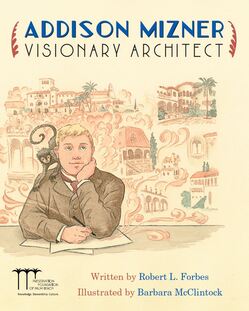 Every once in a while, special circumstances bring a group together for an unusual creative project. ADDISON MIZNER, Visionary Architect came about in just this way. The Preservation Foundation of Palm Beach wanted an authoritative text to use in their Heritage Education Program as well as when talking about the history of the town to visitors and school groups. They could have made a brochure, but they realized that they needed more than this. Despite it being a much bigger undertaking, they decided to create a book that would be historically accurate but also engaging for readers of all ages. Robert Forbes was a natural choice for the text because he was already a published author who lives in Palm Beach, not to mention that he’s a member of the Preservation Foundation of Palm Beach. He suggested Barbara McClintock for the elegance and whimsy that her illustrations could bring to the book. The result is remarkable. Filled with photographs alongside Barbara McClintock’s art, the book offers both a captivating story and a plethora of facts that invite the reader to take a deep dive into the man who created the look of Palm Beach. Below are some questions and responses that each of them gave about the book and the process of creating it. 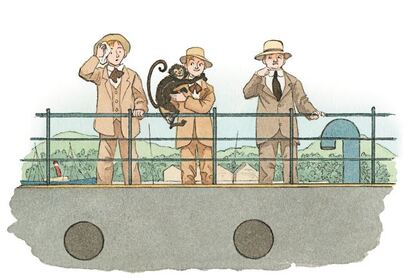 Barbara McClintock: Q: What made you interested in the project in the first place? A: I’m fascinated by stories about creative people. Both my parents were artistic - my mother was a textile and design major in college; she was skilled in sewing intricately tailored clothing, and created her own patterns from which she made most of her own clothing ( and most of the dresses for my sister and me ). My father was a professional portrait photographer; later in his career he switched to architectural photography. He loved talking about the special lenses he used to mitigated the extreme perspective lines that are problematic when photographing tall buildings. His interest in texture, lighting, pattern, detail, and historical constructs of buildings led me to a deep interest in drawing buildings in my illustration career. My partner is an editorial illustrator. Many of my friends are artists, graphic designers, writers, musicians and people involved in movement through dance, qigong and martial arts. Nothing gives me joy as much as being part of a creative community, and celebrating the gifts that beauty brings to us all. Q: What is your favorite fact about Addison Mizner? A: That he had a life-long love of spider monkeys. Q: What was your biggest challenge in creating the book? A: There’s so much to say and show about Addison’s life! I wish I could make a book just about the scrapbooks of drawings and photos of the buildings, materials and influences he loved! He had such a far-ranging imagination and an ever-curious eye. And he was quite a character! He deserves a book the size of the Gutenberg Bible, but I must say Bob Forbes did a splendid job of reducing Addison’s amazing life into a handy-sized book! Q: What was the most joyful part of creating the book? A: Being part of Team Mizner - our crew who made this book possible. I miss our regular emails and meetings brainstorming about creating our marvelous book. Q: What do you hope readers will take away from the book? A: As Frank Lloyd Write said about Addison; “Many architects had imagination but only Addison Mizner had the courage to let it out of the cage.” I hope our book inspires readers to do just that. Q: Is there anything else you want to add or comment on? A: I hope anyone holding this book in their hands knows all the love, inspiration, imagination and hard work that went into it’s creation. I’ve been privileged to work with the author Bob Forbes, designer Bob Kosturko, my every generous agent Jennie Dunham, Marie Penny and all the folks at the Preservation Foundation of Palm Beach. It’s been a blast! 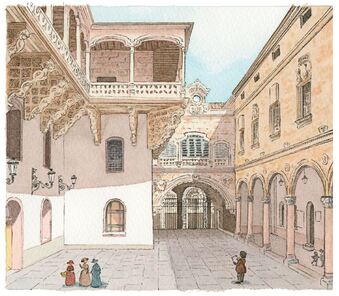 Bob Forbes: Q: What made you interested in the project in the first place? A; A friend of mine, Pauline Pitt, knew I was a children’s author and asked me if I would be interested in writing a biography of Addison Mizner. She was the former Board Chair of The Preservation Foundation of Palm Beach, and the book would be used for their popular 4th Grade Heritage Education Program with its emphasis on architecture. I was intrigued by the idea of writing a non-fiction book and I knew there was plenty of material on Mizner available, especially in Palm Beach, his hometown. I said yes, but it wasn’t until I started reading books on this multi-faceted man, visiting collections, and making copious notes, that I realized he was a big subject in more ways than one. From my earlier writing I felt I had the right voice for the intended readers, but I soon found I was including too much material. After a few drafts and with help from an editor I’ve worked with in the past, the project began to come together nicely. I learned I had to make tough choices on what to include and what just wouldn’t fit. Q: What is your favorite fact about Addison Mizner? A: That for all the disappointments and hurdles life kept throwing at him, his growing passion for architecture never diminished. The vision of how he wanted to incorporate building styles he had seen in his travels burst forth when he met Paris Singer and moved to Palm Beach to build what became the Everglades Club, one of his greatest masterpieces. What he created was very much his own brand of architecture, and it took the world by storm. Q: What was your biggest challenge in creating the book? A: I came to realize that writing non-fiction was for me a whole lot harder than writing fiction. But the challenge was made easier by the extraordinary character I was writing about. Q: What was the most joyful part of creating the book? A: By far the most joyful part was when Barbara McClintock said yes to doing the illustrations! I knew then the book would be a lovely adventure for its readers. Q: What do you hope readers will take away from the book? A: I hope they come away understanding that, like it was for Addison, life isn’t a straight path, but that by believing in yourself and working hard, you may just find your way; and like Addison, you need to keep going forward! Also, that readers come away aware of how Addison’s famous Mediterranean Revival style evolved and how he applied it so effectively for each client. In all his wanderings, he had accumulated vast hands-on knowledge that allowed him to make almost everything he needed to do every job, from roof tiles and ironwork details to furnishings to laying out the landscaping and gardens and always situating houses perfectly on the client’s property. I hope too that readers find the book a lively welcome into the world of a truly visionary architect. Q: Is there anything else you want to add or comment on? A: There is a fun story of Addison from his early travels where he ends up in Australia and finds himself in a boxing ring face-to-face with “The Pride of Australia.” It was a big match he was very much expected to lose. I won’t say any more; you’ll simply have to read the book to find out what happens! 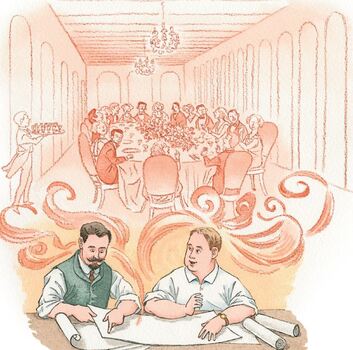 Amanda Skier, President & CEO and Marie Penny, Director of Archives - The Preservation Foundation of Palm Beach Q: What made you interested in the project in the first place? A: The Preservation Foundation of Palm Beach introduced its Heritage Education Program in 1987 to teach about the history of the region through the medium of local architecture. When I was in the role of Director of Education several years ago, I dreamed of creating a children’s book about Addison Mizner. There has been so much written about him, but nothing targeted towards young readers. Our new publication Addison Mizner, Visionary Architect allows for students from all over Palm Beach County to learn about the development of the Mediterranean Revival style. -AS Q: What is your favorite fact about Addison Mizner? A: That he was an artisan in addition to being an architect. He didn’t just design his buildings, but he fabricated many of the materials and created spaces with strong historical precedents. -MP Q: What was your biggest challenge in creating the book? A; Addison seemed to have lived many lives. Fitting it all in to the book, while focusing on his trajectory as an architect was a challenge. However, we believe including all of Addison’s trials adds to the richness of the story. -MP Q: What was the most joyful part of creating the book? A:Robert Forbes creative vision steered this project, he introduced illustrator Barbara McClintock and graphic designer Robert Kosturko who brought his narrative to life. Watching this all unfold from my original concept was incredibly rewarding! -AS Q: What do you hope readers will take away from the book? A: Students will relate to the story of Addison, who has his own hero’s journey throughout his many travels and adventures. His story of overcoming hurdles such as his leg injury and finding a way to pursue his dreams is timeless. In addition, readers will learn about architecture as seen through the eyes of Addison, especially his early exposure to Mayan and Spanish Colonial architecture in Guatemala. -MP The book is not currently available in bookstores. Here’s a link below to purchase the book online from The Preservation Foundation of Palm Beach: https://www.shoppalmbeachpreservation.org/products/addison-mizner-visionary-architect
Illustrations copyright © 2023 by Barbara McClintock Even when you’ve accepted the oft-repeated truth that publishing is a slow process, it can be excruciating to wait for all the pieces to come together. Writing a manuscript can take significant time, but because that is active, you may find the stages between writing and publication surprisingly challenging.
Obviously, a good deal of patience is required in this career, but there are things you can do while you wait. Use the list below as a springboard for coming up with ways to be active in the in-between times. What to Do While You’re Waiting to Be Published: 1. Start a new project. When the revisions for your contracted manuscript are in, and you’ve handed your story off to the industry professionals who will run the next leg of the race for you, it’s time to get started on something new. Think both strategically and creatively! Is there a follow-up project that would be perfect for capturing the audience you are targeting with your current book? Or maybe your brain will turn to mush if you keep thinking about that topic and you need to do something completely different to reset your inspiration? Time writing is never wasted time. So keep up that writing habit while you wait for publication! 2. Research/find your target audience. Even though you will likely have some marketing support when you publish traditionally, you will always be the best person to talk about (and sell) your book. Do you know how to find the readers who will listen? Where are they hanging out? And what else are they reading? Get to know your target audience so that you can interact with them. It will make you a better writer to engage with the reading community and pay attention to how reader expectations change in your genre over time. 3. Grow your relationships. This one piggy-backs on the last suggestion. Part of your purpose in finding your audience is sales-related market research. But another big part is growing genuine relationships. The writing and reading community is wonderful to participate in actively – book people are good people! Do you have writer friends inside and outside of your genre that are cheering you on? Are you encouraging others? Participating in book clubs, writing groups, and social media can all be positive ways to grow relationships while you wait. 4. Create an Author Site Many authors think that they should wait to create an author website because they don’t think it’s important to have one pre-publication or don't know what to put on it. While that's understandable, there's a lot you can do to start thinking about your brand and create a home base online for yourself. Think of it as a calling card. It's a great tool for helping agents, editors, and eventually readers to get a sense of who you are and for you to show us that you are ready to be professionally engaged online. 5. Study Your Craft While you are waiting to find the perfect agent, or waiting for your agent to find the perfect editor, or waiting for the editor to bring your book into the world... keep learning! Pick up a book on worldbuilding, dialogue, non-fiction research, or even marketing. Think of this "down time" as "in between time" and use it wisely to become an even better writer! We have a long list of suggested books and resources right here on our website! 6. Take Deep Breaths The tough reality is that it can take two years from receiving an offer from a publisher to holding your book in your hands. There are teams of people invested in your work, and they all have jobs that take a certain amount of time. They are also coordinating with each other to make sure everything is in place to maximize the chances of your book reaching its audience and selling well. Authors are busy team members for certain parts of this process and will feel sidelined for others. Take some deep breaths and remember that you will be busy again soon. You know what they say about good things and waiting. by Anjanette Barr |
What's New?Keep an eye on this page for agency news, author interviews, and more! Archives
July 2024
Categories |
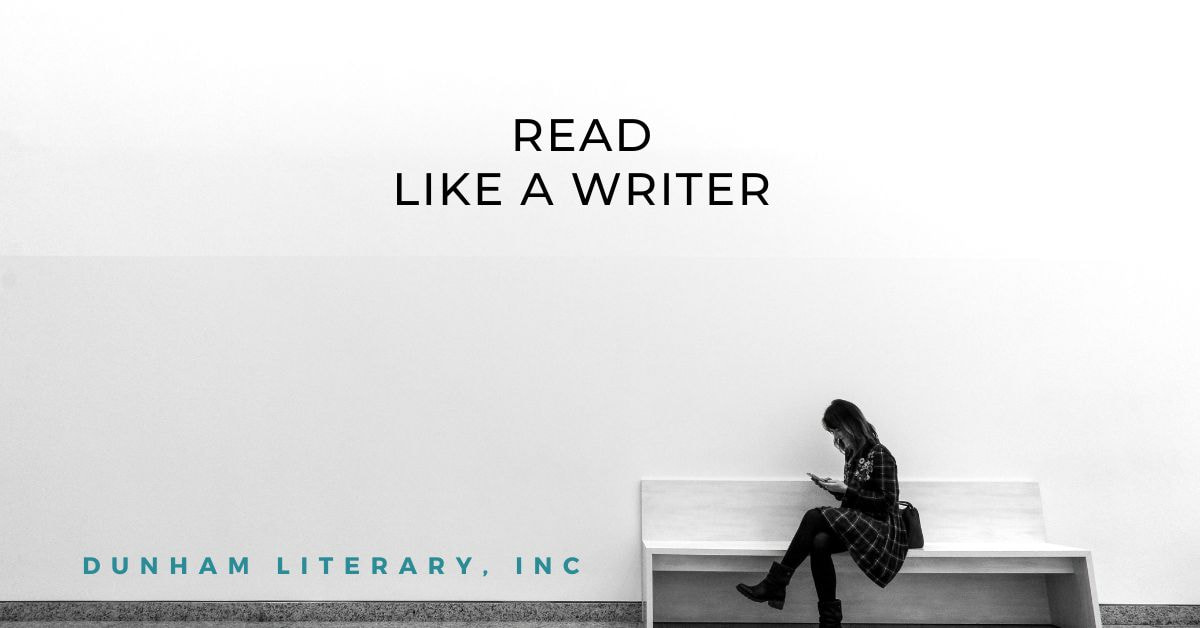
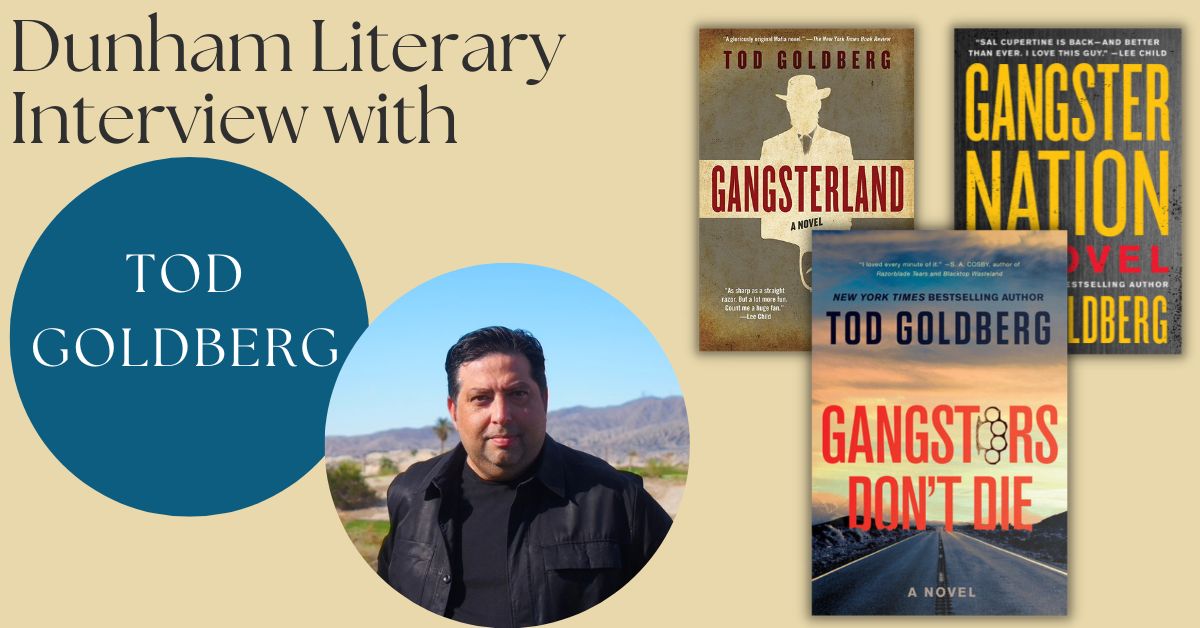
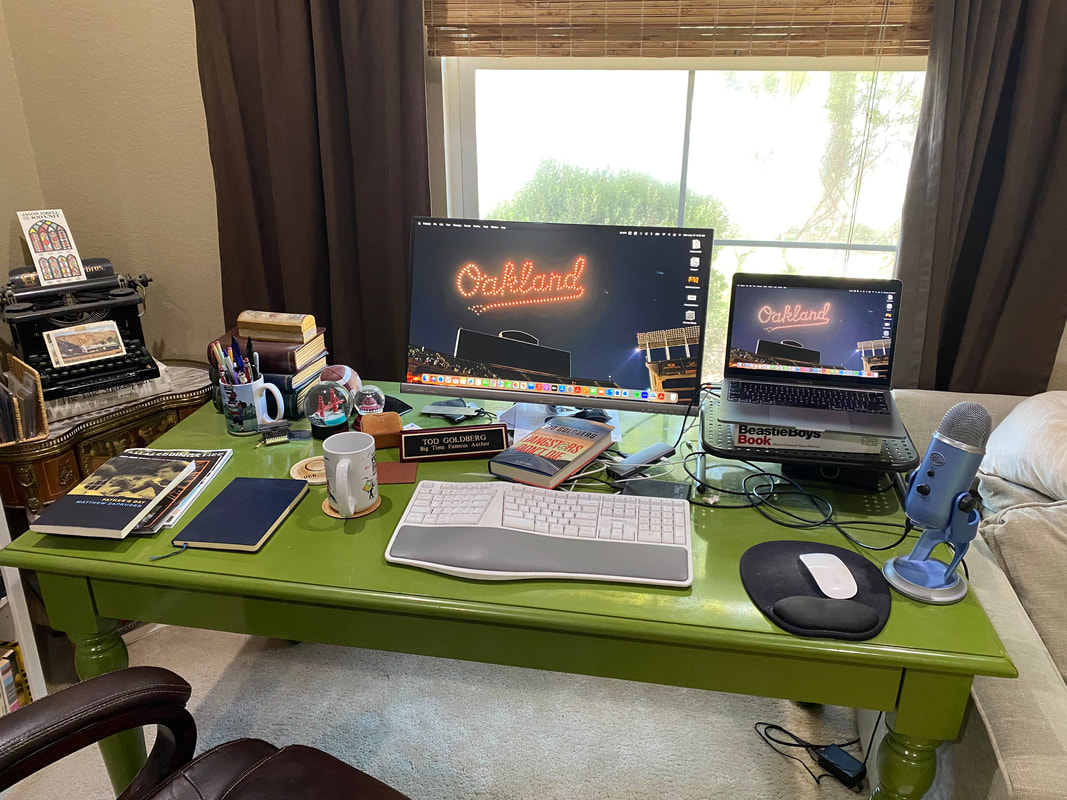
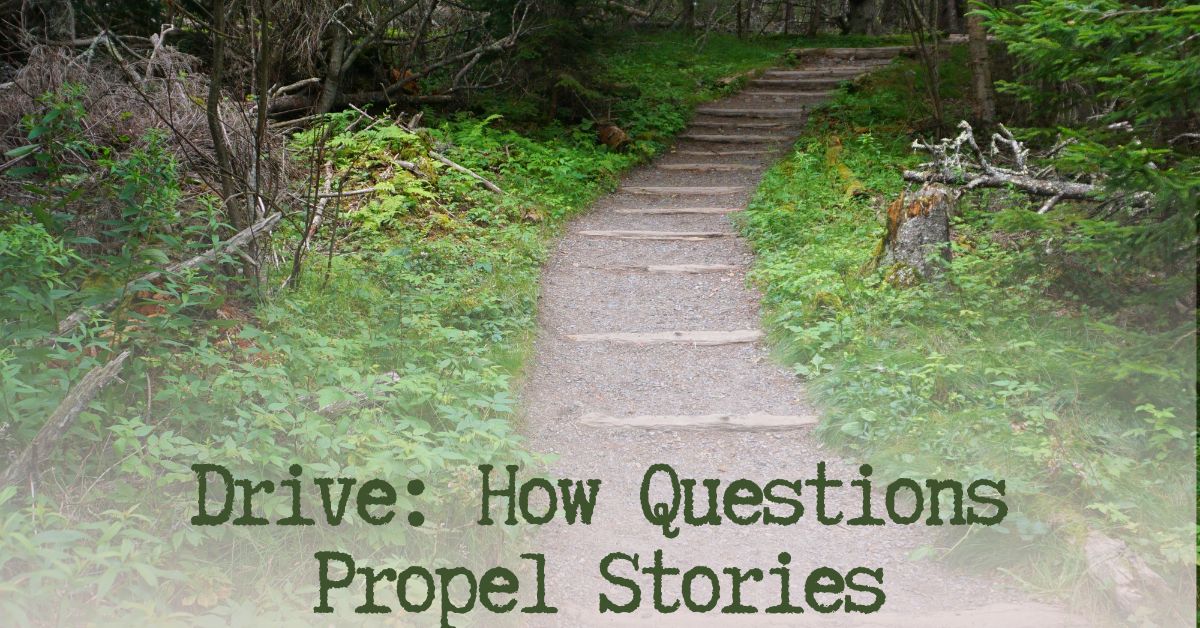
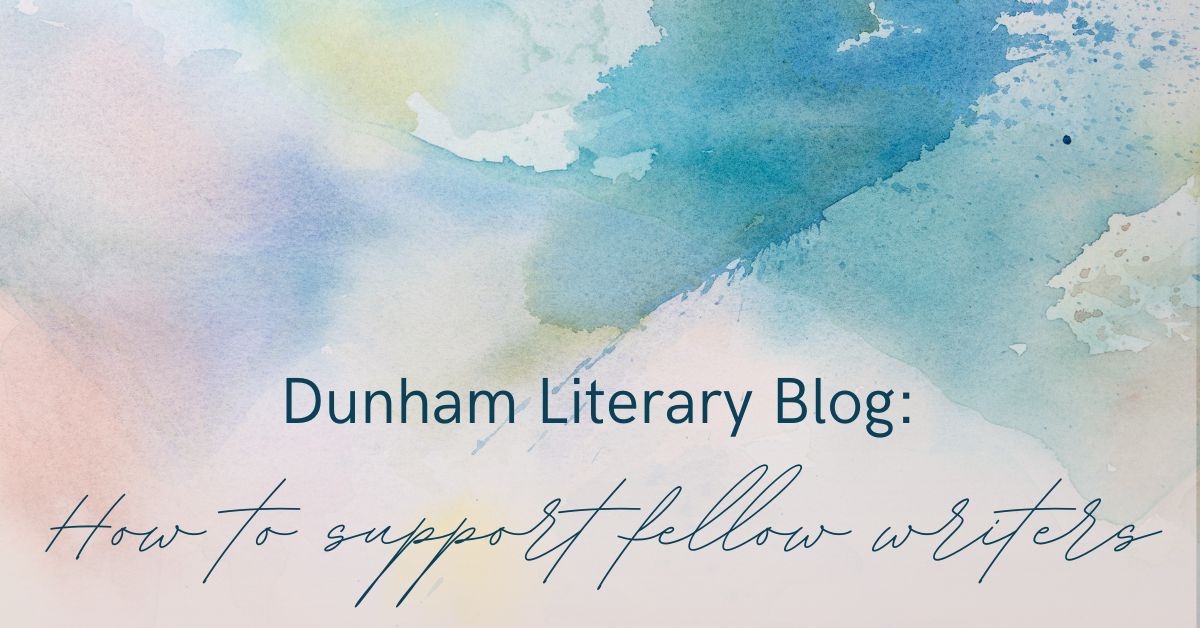
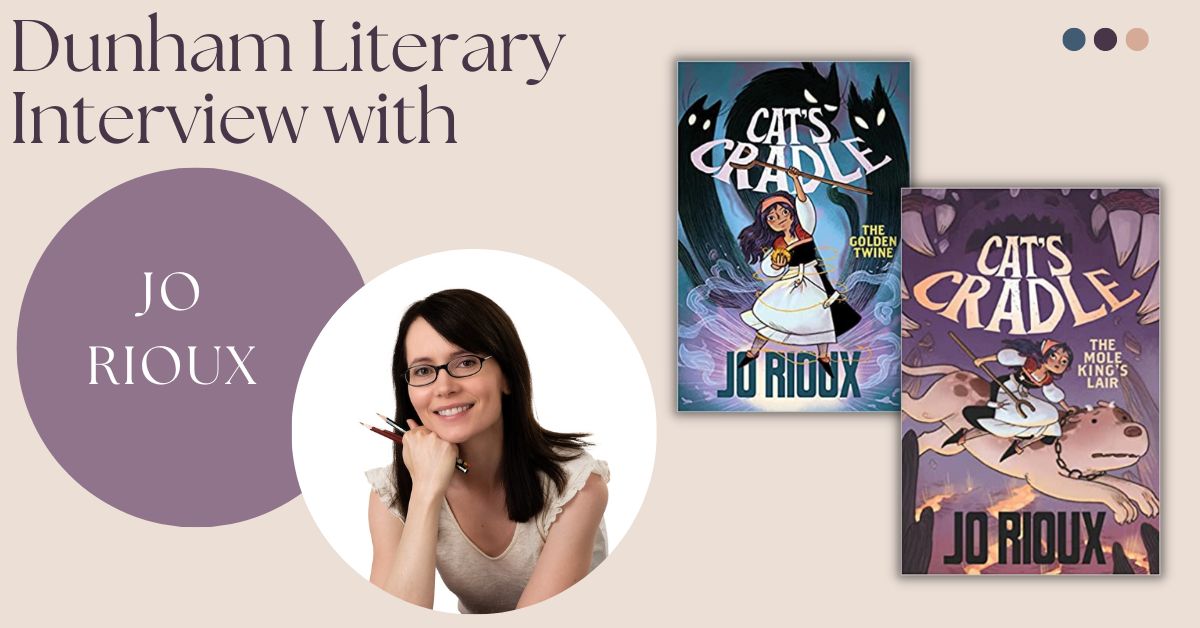
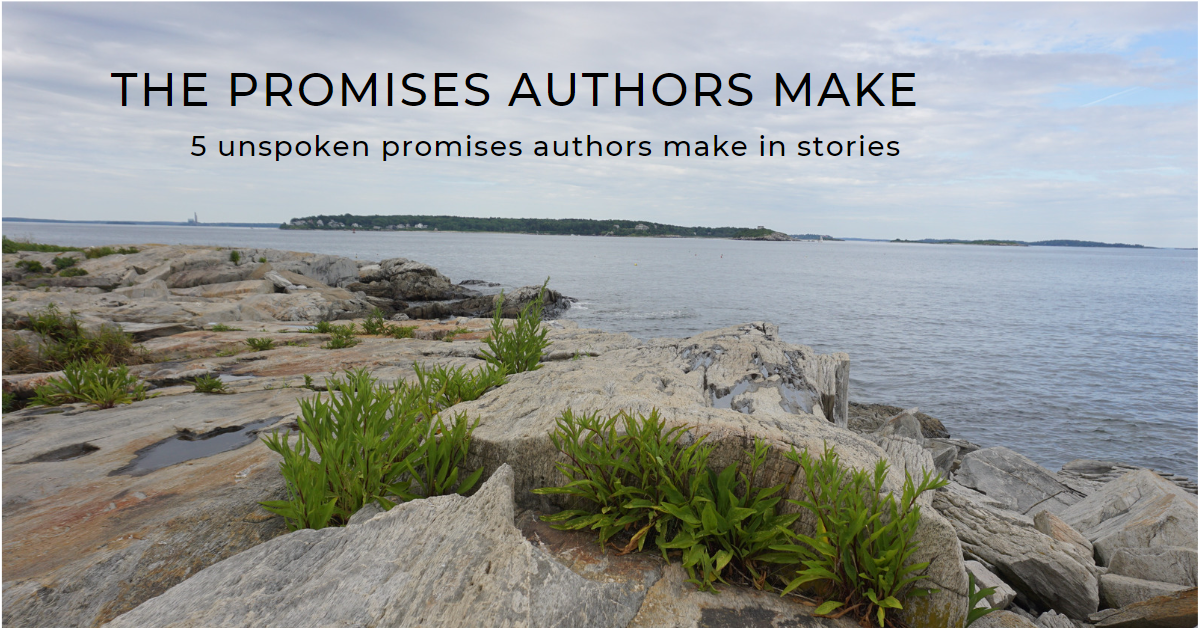
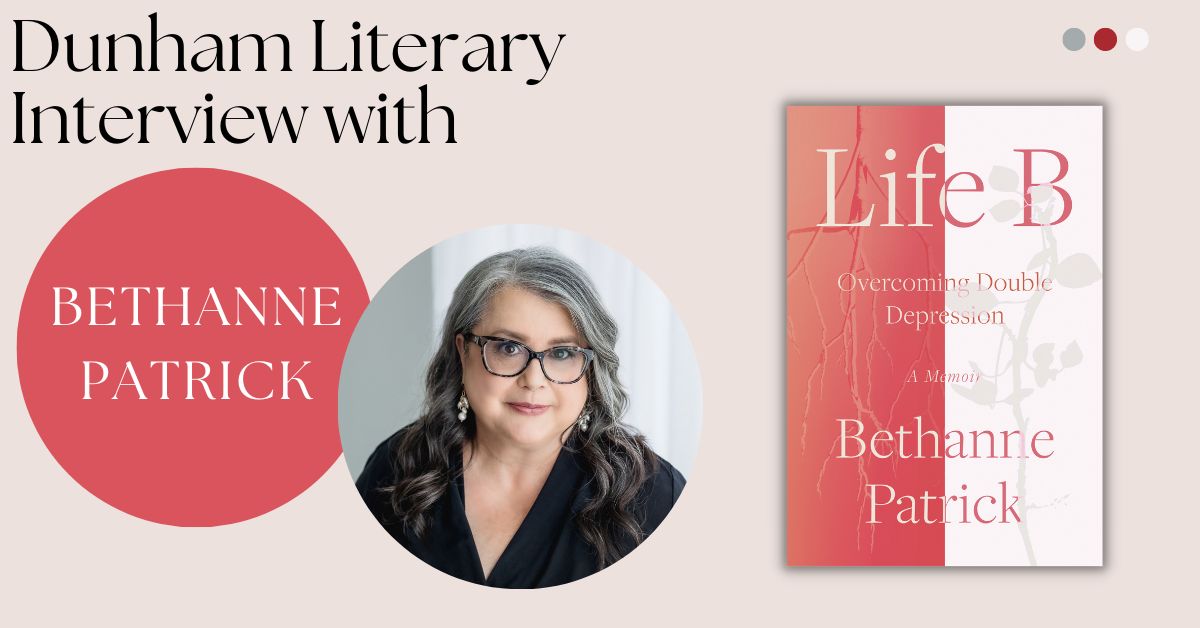
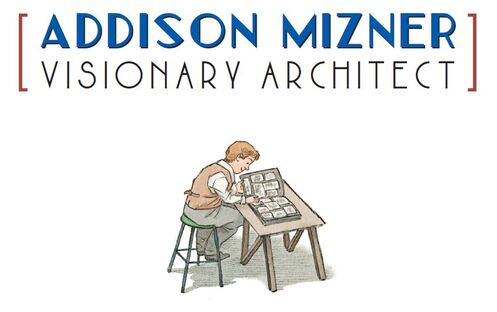
 RSS Feed
RSS Feed